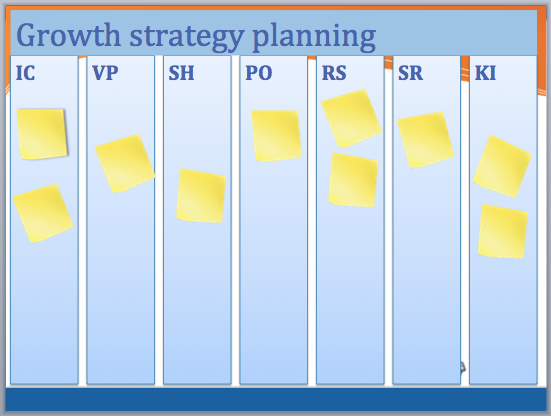
CLICK ON THE GRAPHIC ABOVE TO HEAD TO ALL OF TODAY'S NEWS STORIES
FOLLOW US ON FACEBOOK!
Thursday, January 31, 2013
7 Essential Elements to Small Business Growth
Business plans are great, useful even, but the planning process and a growth oriented plan of action is where it’s at for the small business.
A growth strategy planning approach forces you to focus on customer based strategy, high priority objectives and measurement of the things that actually impact your ability to reach your growth goals.
A growth strategy planning approach forces you to focus on customer based strategy, high priority objectives and measurement of the things that actually impact your ability to reach your growth goals.
Every business that has growth in mind should make quarterly planning the practical and useful vehicle that it is.
The following seven elements and associated questions make up the foundation for brainstorming, questioning and organizing your growth planning strategy sessions.

Divide a white board into seven segments and pass out post it note pads to all participants involved. Then, just start asking questions. Let everyone vote with their ideas in private then start posting and discussing the thoughts as a group.
1) Ideal customer (IC) – How would someone spot our ideal customer? What do they look like, what do they think, where do they live, work and play? How do we locate them? What is their pain? Is there a behavior that signals they are ideal? What triggers their desire to solve their problem? What do they get when they hire us?
The goal of this phase of planning is to complete a picture of the ideal customer – one that values your unique approach. Look to your most profitable clients that also tend to refer business for clues.
2) Value proposition (VP) – Why do people buy from us rather than our competitors?This is a hard one for some companies to nail and you might have much better luck spending some time asking your customers why they buy from you, stay with you and refer you. Listen very carefully to the stories the tell for clues to your value proposition. There are a handful of proven value propositions, but the key is for you to find and commit to something that clearly differentiates.
3) Strategy Hourglass (SH) – Where are our gaps in customer engagement? I believe that process of growing a customer centric business lies in developing a mindset that focuses on the act of logically moving customers and prospects through seven stages of engagement – know, like, trust, try, buy, repeat and refer. The Marketing Hourglass is a tool I’ve used with hundreds of business owners to help create a focus on customer engagement.
4) Primary objectives (PO) – What are our 2-3 highest priority objectives for growth?One of the things the derails growth most often is too many goals and objectives. Most business can only focus on a couple of initiatives at any give time. You must identify and commit to no more than three priorities and then go to work on creating the projects and tasks needed to pull these off. And, you must say no to the idea of the week that shows up to knock you off course.
5) Revenue streams (RS) – How can we create more streams of revenue? There are only three ways to grow: add more customers, increase the average transaction size, increase the number of purchase per customer. It’s actually easier to sell more to existing customer than add new customers. What services or products could you add? What packaging, pricing or promotion could you realign? What new markets or segments could you enter?
6) Strategic relationships (SR) – What relationships do we need to develop? This is probably one of the greatest untapped opportunities for growth. What marketing partners could be motivated to promote and co-market your business? What joint ventures would allow you to tackle new work? What vendors or suppliers could help you grow? What competitors could become cooperative partners for new venture, markets or work?
7) Key indicators (KI) – What metrics impact our growth most? Most businesses can tell you how much revenue they did last month and how much money they have in the bank. By tracking things like % or leads converted, % or business via referral, cost to acquire a new customer and % of customers likely to refer you can take control of the things that actually impact your growth in near real-time. Here are 7 key indicators that I believe should be part of the picture.
When asked to come into a business and evaluate it for growth or help develop a marketing plan – this is where I start because this is where all the answers reside.





